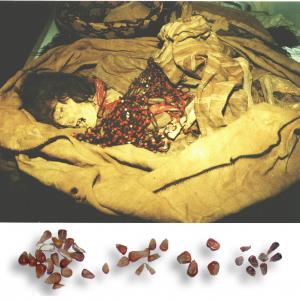The far-reaching influence of Spanish and Portuguese colonisers appears not to have extended to South American agriculture, scientists studying a 1,400-year-old Andean mummy have found.
The University of Manchester researchers compared the DNA of ancient maize found in the funerary offerings of the mummy and at other sites in northwest Argentina with that grown in the same region today.
Surprisingly, they found both ancient and modern samples of the crop were genetically almost identical indicating that modern European influence has not been as great as previously thought.

"The entire culture of South America changed when the Europeans arrived in the 15th century - everything from the language to the whole way of life," explained Professor Terry Brown, who headed the research in the Faculty of Life Sciences.
"Maize is the staple food crop of the region but prior to colonisation it also had a ritual significance - the indigenous people were amazed by maize and even worshipped it.
"Given the immense changes that took place in South America following the arrival of the Europeans it is surprising that this crop has remained unaltered for hundreds of years."
Using the new facilities in the Manchester Interdisciplinary Biocentre - a cross-faculty institute at the University - Professor Brown is now examining the DNA of ancient maize from Peru, up to 6,000 years old, to determine if these much older specimens are also similar to modern crops.
The research was published in the scientific journal Proceedings of the Royal Society of London.
Note: This story has been adapted from a news release issued by University of Manchester.





Comments